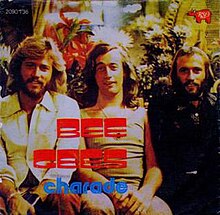
The Bee Gees were a musical group formed in 1958 by brothers Barry, Robin, and Maurice Gibb. The trio were especially successful in popular music in the late 1960s and early 1970s, and later as prominent performers in the disco music era in the mid-to-late 1970s. The group sang recognisable three-part tight harmonies: Robin's clear vibrato lead vocals were a hallmark of their earlier hits, while Barry's R&B falsetto became their signature sound during the mid-to-late 1970s and 1980s. The group wrote all their own original material, as well as writing and producing several major hits for other artists, and are regarded as one of the most important and influential acts in pop-music history. They have been referred to in the media as The Disco Kings, Britain's First Family of Harmony, and The Kings of Dance Music.

Sir Barry Alan Crompton Gibb is a British musician, singer, songwriter and record producer. Along with his younger twin brothers, Robin and Maurice, he rose to worldwide fame as a member of the Bee Gees, one of the most commercially successful groups in the history of popular music. Gibb is well known for his wide vocal range including a far-reaching high-pitched falsetto. Gibb's career has spanned over 60 years.

This Is Where I Came In is the twenty-second and final studio album by the Bee Gees. It was released on 2 April 2001 by Polydor in the UK and Universal in the US, less than two years before Maurice Gibb died from a cardiac arrest after surgery to repair a twisted intestine.

Arif Mardin was a Turkish-American music producer, who worked with hundreds of artists across many different styles of music, including jazz, rock, soul, disco and country. He worked at Atlantic Records for over 30 years, as producer, arranger, studio manager, and vice president, before moving to EMI and serving as vice president and general manager of Manhattan Records.
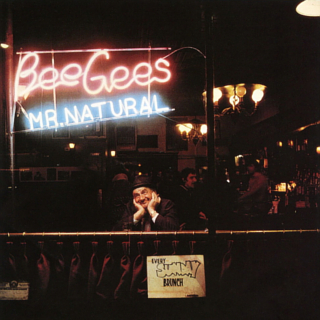
Mr. Natural is the twelfth studio album by the Bee Gees, released in 1974. It was the first Bee Gees release produced by Arif Mardin, who was partially responsible for launching the group's later major success with the follow-up album Main Course. The album's rhythm and blues, soul, funk, and hard rock sounds initiated the group's reinvention as a disco and blue-eyed soul act, which would solidify on subsequent albums. However, Barry Gibb has said that the album was "whiter" than Main Course. The cover photograph was taken at 334 West 4th Street, Greenwich Village, New York City by Frank Moscati, which is today known as The Corner Bistro tavern.

"Nights on Broadway" is a song by the Bee Gees from the Main Course album released in 1975. The second single released from the album, it immediately followed their number-one hit "Jive Talkin'". This track was credited to Barry, Robin and Maurice Gibb.

"Jive Talkin'" is a song by the Bee Gees, released as a single in May 1975 by RSO Records. This was the lead single from the album Main Course. It hit number one on the Billboard Hot 100 and top-five on the UK Singles Chart in the middle of 1975. Largely recognised as the group's comeback song, it was their first US top-10 hit since "How Can You Mend a Broken Heart" (1971).

Still Waters is the twenty-first and penultimate studio album by the Bee Gees, released on 10 March 1997 in the UK by Polydor Records, and on 6 May the same year in the US by A&M Records. The group made the album with a variety of top producers, including Russ Titelman, David Foster, Hugh Padgham, and Arif Mardin.
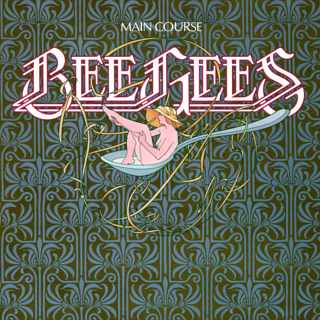
Main Course is the thirteenth studio album by the Bee Gees, released in 1975 by RSO Records. It was the group's last album to be released by Atlantic Records in the US under its distribution deal with Robert Stigwood. This album marked a great change for the Bee Gees as it was their first album to include mostly R&B, soul and funk-influenced songs, and created the model for their output through the rest of the 1970s. It rejuvenated the group's career and public image, particularly in the US, after the commercial disappointment of their preceding albums. Main Course was the first album to feature keyboardist Blue Weaver who had just left the Strawbs and toured with Mott the Hoople. The album cover with the band's new logo designed by US artist Drew Struzan made its first appearance here.
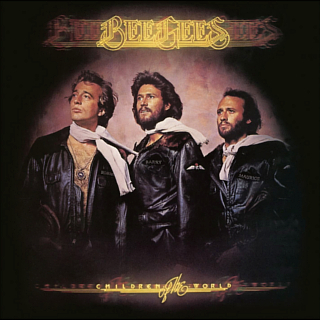
Children of the World is the fourteenth studio album by the Bee Gees, released in 1976 by RSO Records. The first single, "You Should Be Dancing", went to No. 1 in the US and Canada, and was a top ten hit in numerous other territories. The album was re-issued on CD by Reprise Records and Rhino Records in 2006. This was the first record featuring the Gibb-Galuten-Richardson production team which would have many successful collaborations in the following years. Many consider this a "prologue" to the band's foray into disco, which would culminate with the Saturday Night Fever soundtrack the following year.
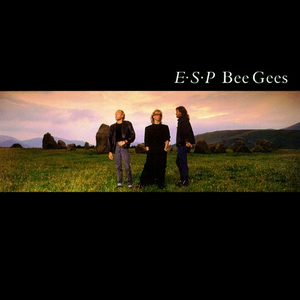
E.S.P. is the seventeenth studio album by the Bee Gees released in 1987. It was the band's first studio album in six years, and their first release under their new contract with Warner Bros. It marked the first time in twelve years the band had worked with producer Arif Mardin, and was their first album to be recorded digitally. After the band's popularity had waned following the infamous Disco Demolition Night of 1979, the Gibb brothers had spent much of the early 1980s writing and producing songs for other artists, as well as pursuing solo projects, and E.S.P. was very much a comeback to prominence. The album sold well in Europe, reaching No. 5 in the UK, No. 2 in Norway and Austria, and No. 1 in Germany and Switzerland, though it failed to chart higher than No. 96 in the US. The album's first single, "You Win Again", reached No. 1 in the UK, Ireland, Switzerland, Germany, Austria and Norway.

"You Win Again" is a song written by Barry, Robin and Maurice Gibb and performed by the Bee Gees. The song was produced by the brothers, Arif Mardin and Brian Tench. It was released as the first single on 7 September 1987 by Warner Records, from their seventeenth studio album E.S.P. (1987). It was also their first single released from the record label. The song marked the start of the group's comeback, becoming a No. 1 hit in many European countries, including topping the UK Singles Chart—their first to do so in over eight years—and making them the first group to score a UK No. 1 hit in each of three decades: the 1960s, 1970s, and 1980s.

"How Can You Mend a Broken Heart" is a song released by the Bee Gees in 1971. It was written by Barry and Robin Gibb and was the first single on the group's 1971 album Trafalgar. It was their first US No. 1 single and also reached No. 1 in Cashbox magazine for two weeks.
"Edge of the Universe" is a rock song by the Bee Gees, written by Barry and Robin Gibb from the album Main Course released in 1975, and also released as a B-side of "Nights on Broadway".

"Mr. Natural" is a song by the Bee Gees, written by Barry and Robin Gibb. On 29 March 1974, it was released as a single and also released on the album of the same name in 1974. It was backed with a folk rock number, "It Doesn't Matter Much to Me". This was the group's first single to be produced by Arif Mardin.

"Wouldn't I Be Someone" is a song by the Bee Gees. It was released on 22 June 1973 in the United Kingdom and in July 1973 in the United States. The photo on the cover of the single was also used on Best of Bee Gees, Volume 2.

New Routes is an album by Scottish singer Lulu recorded between 10 September and 2 October 1969 at Muscle Shoals Sound Studio, one of that facility's earliest recordings, for a 16 January 1970 release.

"Fanny (Be Tender with My Love)" is a song written and performed by the Bee Gees for their Main Course album in 1975. It was the third single release from the album, peaking at number 12 on the United States Billboard Hot 100 and number two in Canada. According to Maurice Gibb, producer Quincy Jones called "Fanny" one of his favorite R&B songs of all time.
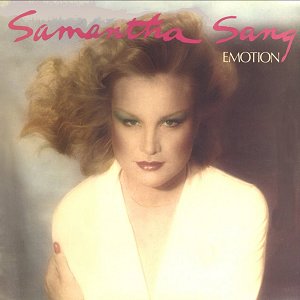
Emotion is the second album by Australian singer Samantha Sang, released in 1978. It features her biggest hit "Emotion" as well as her follow-up hit, "You Keep Me Dancin'".

"Crazy for Your Love" is a song by pop music group Bee Gees, which was released in 1988 as the third single from their seventeenth studio album E.S.P. (1987). The song was written by Barry Gibb, Robin Gibb and Maurice Gibb, and produced by Arif Mardin and the Bee Gees, with co-production by Brian Tench. "Crazy for Your Love" peaked at No. 79 in the UK Singles Chart and remained in the Top 100 for two weeks.
